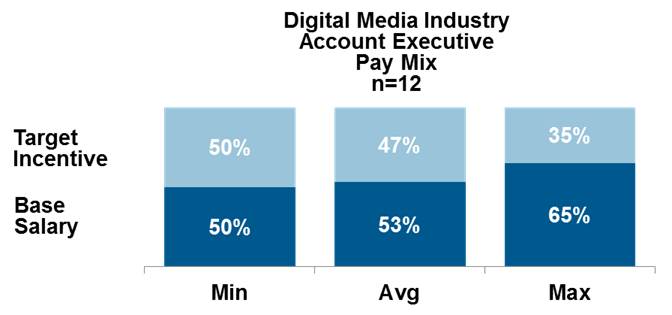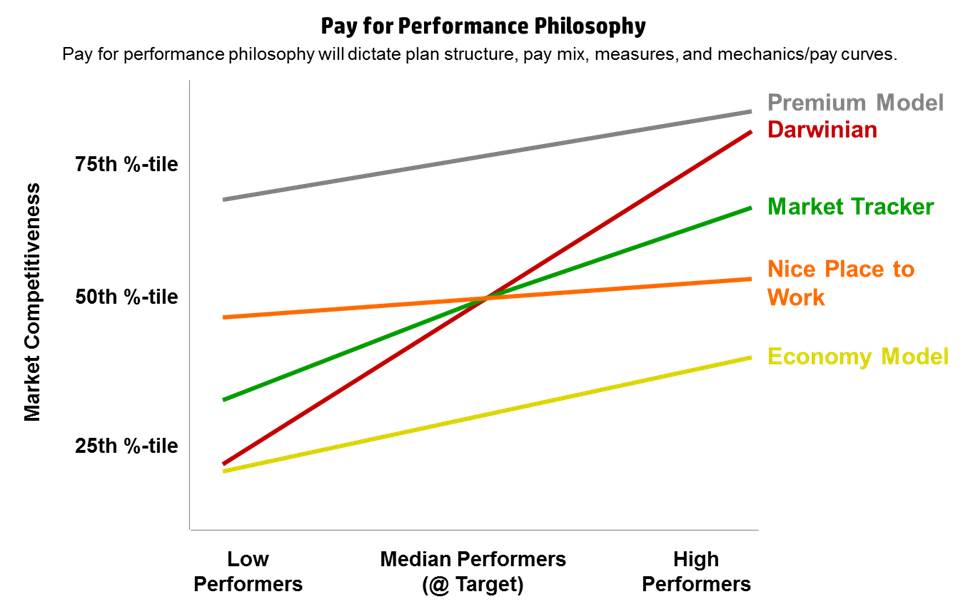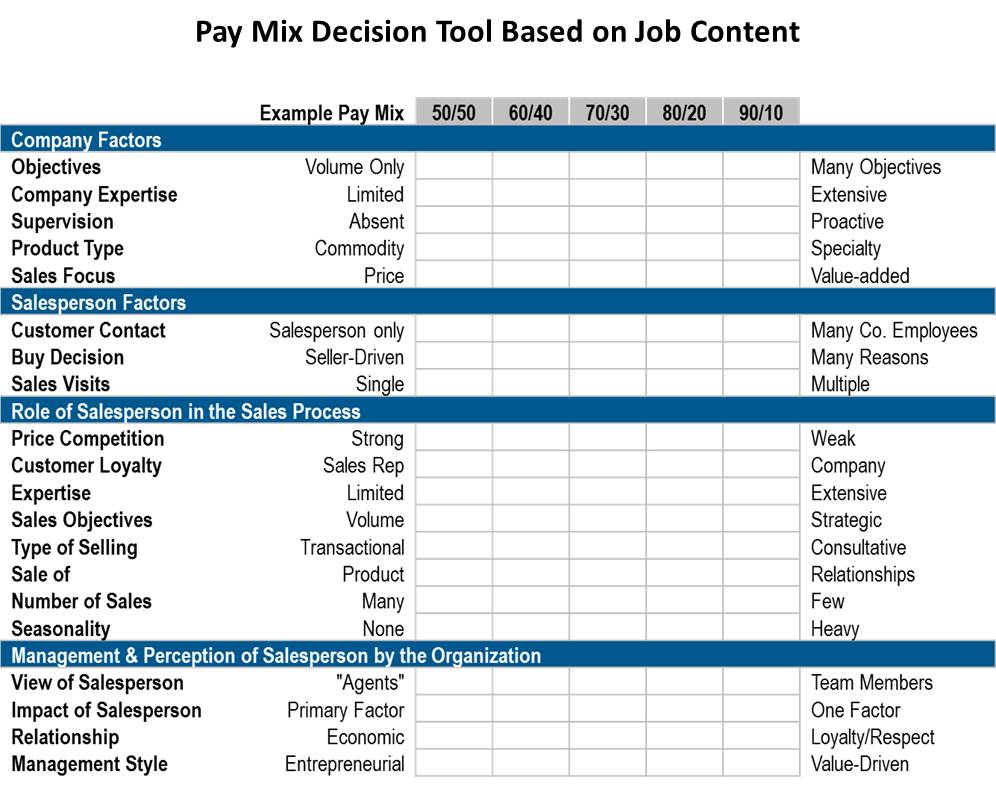The art of setting effective pay mixes - a digital ad sales rep illustration

You’re responsible for setting the pay mix for your sales roles … What’s the best method to do so?
- Should you buy market data and use the market average?
- Should you copycat what you did at your last company?
- Should you survey the sales leadership team and use the average of what they tell you?
- Should you allow managers to make pay mix decisions for each employee based on their opinions and recruitment needs?
These are all options that many companies use. Some are strictly scientific (market data). Others seem like pure art (manager discretion). But there’s a better way. The Alexander Group recommends companies take a more methodical approach to setting pay mix – the right mix of art and science. Here are the four steps to setting effective pay mixes:
1) Gather market data
2) Confirm pay for performance philosophy
3) Confirm job content
4) Set pay mix (based on market data, pay for performance philosophy, and job content)
We will use a hypothetical digital ad sales company called Digital Banner Ads as an example through the process.
1) Gather market data
There are many sales compensation pay data survey companies that provide pay and pay mix data. The Alexander Group also gathers plan design practices including pay mix data in its sales compensation benchmarking database.
Below is an example of AGI’s market data for a Digital Ad Sales Rep role, generally called an Account Executive.

12 Leading Digital Media Companies
As you can see from this data, there are varied practices in the marketplace for this job, ranging from 50/50 to 65/35. We’ve even seen some more risking pay mixes like 40/60. So, for Digital Banner Ads to set a pay mix for its Sales Reps, we need to gather more data.
2) Confirm pay for performance philosophy
The leadership team should not only confirm their pay philosophy (the market percentile used to set target pay levels), but also their pay for performance philosophy (the level of differentiation between their top and bottom performers). The graph bellow articulates five common pay for performance philosophies. However, companies can develop their own unique philosophy. The most common philosophy would be the “Market Tracker” philosophy, i.e., when a company sets pay mix as close to the market as possible. A “Darwinian” philosophy typically uses more aggressive pay mix (e.g., 40/60 as opposed to 50/50), while “Nice Place to Work” philosophy use a less aggressive pay mix (e.g. 60/40 as opposed to 50/50).

Digital Banner Ads’ executive team were in a growth mode, and consequently wanted to use stock to attract and retain talent. So, they decided to set their cash pay levels at the 50th of the marketplace and use a “Market Tracker” pay curve to ensure their plans attracted and retained high caliber talent.
3) Confirm job content
The key to designing the best sales compensation plan is to truly understand your job roles and the desired behaviors for each role. Is your role a Transactional Sales Rep independently selling high volume, short sales cycle, and commodity products? Or, is your role a Consultative Sales Rep collaborating with a team of company resources to sell a few, very large, long sales cycle customized solutions? The Transactional Sales Rep will have a high amount of individual persuasion to close all their deals and will therefore have a more aggressive pay mix. The Consultative Sales Rep’s level of persuasion is lower, since he/she will need to rely more heavily on the company brand and team of resources to pursue and close deals. Therefore, a less aggressive pay mix is appropriate.

Digital Banner Ads realized that their traditional Sales Rep role had evolved over the years and consequently they now had two types of Sales Reps. Their Sales Reps were assigned to 20-30 agencies and advertisers and spent a lot of time completing RFP responses via their agencies. Their Strategic Account Sales Reps were assigned to 1-3 very large advertisers (like Proctor & Gamble) and their associated agency and spent most of their time working with internal company resources like branded entertainment, category specialists, product specialists, finance, ad operations, and leadership to negotiate upfront contracts and customized solutions with their advertisers. So, it made sense to use a more aggressive pay mix for their Sales Rep roles and less aggressive pay mix for their Strategic Account Sales Reps.
4) Set pay mix (based on market data, pay for performance philosophy, and job content)
Once you have gathered the market data, confirmed your pay for performance philosophy, and job content, it is time to take all these factors into consideration to set the right pay mix for your role.
Digital Banner Ads decided on the following:
- Role: Sales Rep
- Pay Mix: 50/50
- Rationale: The market average is 53/47, which is an odd pay mix. Digital Banner Ads’ pay philosophy was to align to the market, however this role was very transactional in nature, so it made sense to apply a more aggressive pay mix than the market.
- Role: Strategic Account Sales Rep
- Pay Mix: 60/40
- Rationale: The market average is 53/47, which is an odd pay mix. Digital Banner Ads’ pay philosophy was to align to the market, however this role was very strategic in nature, so it made sense to apply a less aggressive pay mix than the market.
Conclusion
Setting pay mixes is a combination of art (using your company’s pay for performance philosophy and job content) and science (using market data points). Using the 4-step methodology to setting your pay mixes allows you to justify your decisions with all relevant stakeholders and communicate them to the sales team. We hope you can use this hybrid approach to setting appropriate pay mixes for your company.
Learn more about the Alexander Group’s sales compensation and benchmarking services.